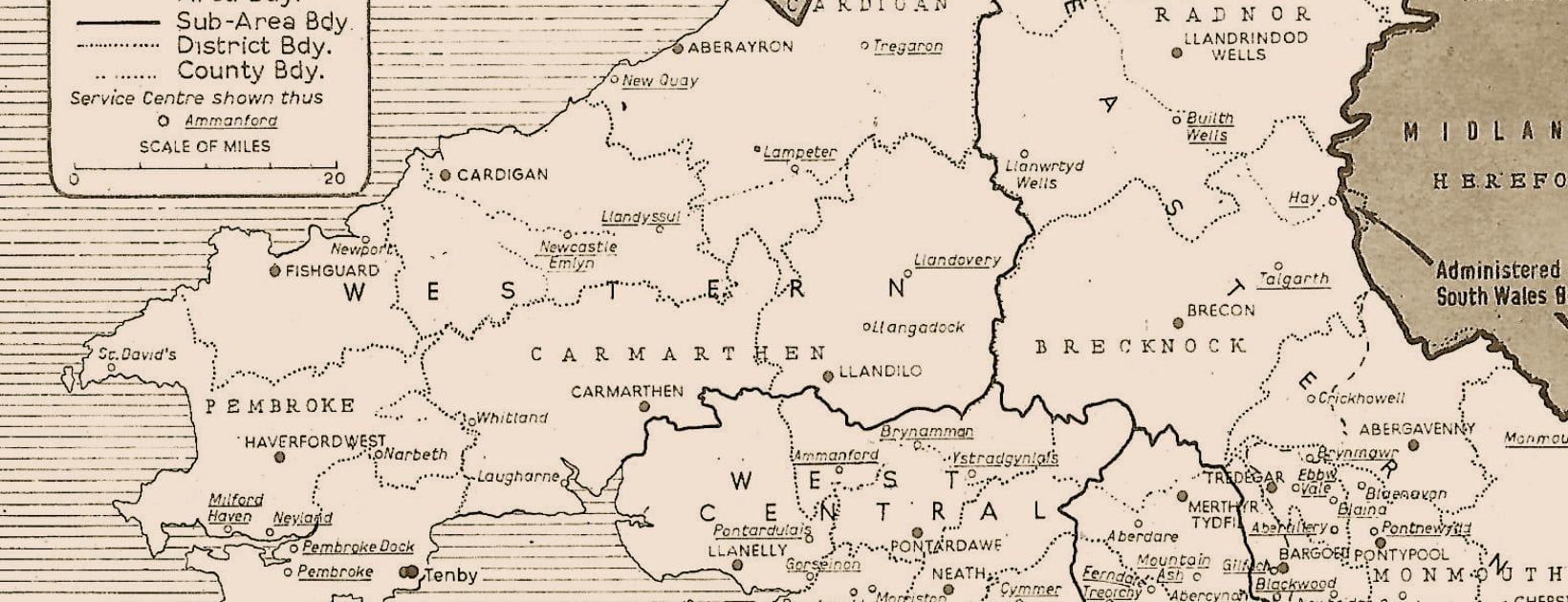Electric Tramways in Southern Wales[1]
| YEARS OPERATING | ROUTE MILES | MAX NO OF CARS | |
| Aberdare | 1903-1935 | 5.8 | 26 |
| Cardiff Corporation | 1902-1950 | 19.5 | 242 |
| Llanelly & District Co.. | 1911-1938 | 6.2 | 16 |
| Merthyr Tydfil Co. | 1901-1939 | 3.5 | 20 |
| Newport Corporation | 1903-1937 | 8.5 | 57 |
| Pontypridd UDC | 1905-1931 | 5.3 | 31 |
| Rhondda Tramways Co. | 1908-1934 | 20.9 | 54 |
| Swansea Tramways Co. | 1900-1937 | 13.3 | 107 |
| Swansea & Mumbles Railway | 1929-1960 | 5.4 | 13 |
Eight electric tramway systems were opened between 1900 and 1913. The Swansea and Mumbles line was a conventional railway electrified on tramway principles in 1929. Two of the companies–Llanelly & District and Merthyr Tydfil–combined tramway operation with public electricity supply.
Both the Rhondda and Swansea companies built their own power stations for supplying the tramway network. In 1927-28 Rhondda stations generated 3.49 million kWh.[2] Rhondda was also unusual in providing an electric tramway seven yeas before public supply began in the urban area.
Tramway supply as a proportion of total electricity sales in 1925-26 varied from 47.0 percent in Aberdare to 29.4 percent in Pontypridd, 22.9 percent in Merthyr Tydfil and 18.8 percent in Cardiff. [3]
Electric tramways provided fast, efficient and cheap urban transport and were very profitable before 1914. Motor bus competition after the war quickly ended the viability of the smaller systems.
____________________________
[1] Compiled from Keith Turner, Directory of British Tramways, Vol 1 (Stroud: Tempus Publishing, 2007).
[2] Electricity Commissioners, Generation of Electricity in Great Britain, Year ending 31st March 1928 (London: HMSO, 1928).
[3] Electricity Commissioners, Engineering and Financial Statistics 1925-26.
[next]


